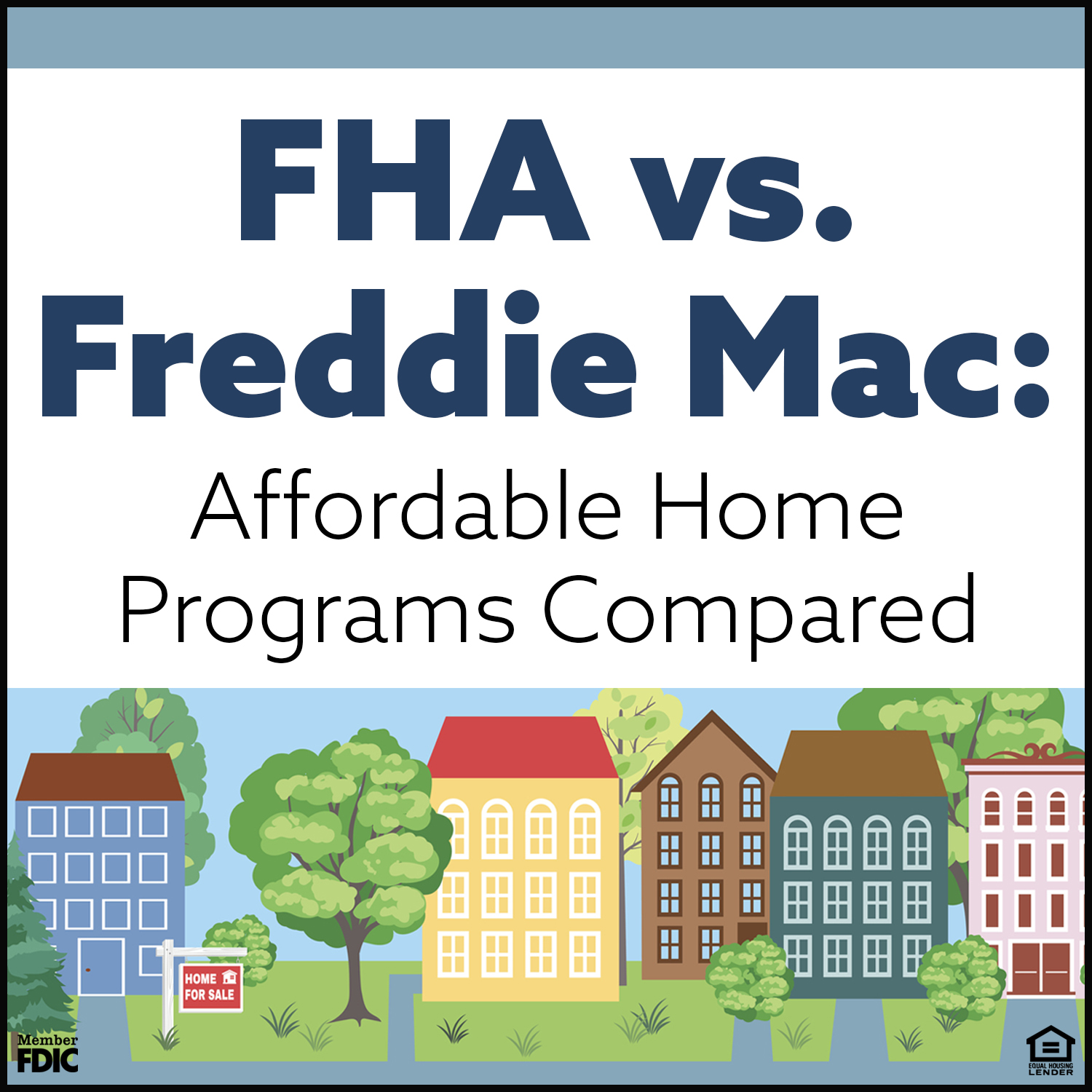
FHA vs. Freddie Mac: Affordable Home Programs Compared
As housing costs continue to rise, so does the need for affordable mortgage financing. Thankfully, affordable options are expanding to keep up with the diverse needs of first-time and repeat buyers. In fact, you probably hear more about low-down payment mortgages today than ever before. Internet search data reveals many potential borrowers search for affordable housing using “Federal Housing Administration” or “FHA” as a key search word, but in reality, there may be better options out there for you.
FHA Loans
A Federal Housing Administration (FHA) loan is a home mortgage that is insured by the government and issued by a bank or other approved lender. With a minimum required down payment of 3.5%, a lower allowable credit score, and eligibility after just 24 months of a bankruptcy discharge, the FHA loan has a hold in the affordable housing sector as it may be the only option for some homebuyers.
However, borrowers who take advantage of FHA financing are required to pay an upfront mortgage insurance premium (MIP) of 1.75% of the base loan amount. Additionally, depending on which FHA product you select, you may be required to pay the mortgage insurance premiums for the entire loan term. If that is the case, the good news is that these insurance premiums have recently been reduced to be more comparable to conventional loan pricing.
Lastly, appraisals for FHA mortgages must pass a property condition screening checklist that is much more rigorous than a conventional mortgage. Not to mention if there are multiple offers on a home, offers with pre-approved conventional financing are accepted more often over those with FHA pre-approved financing.
Freddie Mac’s Home Possible® or HomeOne® Program
There are some attractive alternatives to FHA financing including Home Possible® & HomeOne® which are originated by Freddie Mac and issued by a bank or other approved lender. These conventional mortgages require as little as 3% down and have no minimum credit score requirement (for HomeOne®, at least one borrower must have a usable credit score). Both products are available to eligible first-time or seasoned homebuyers with low to moderate income and can be combined with down payment assistance loans and/or grants.
One of the most notable differences between Freddie Mac loans and FHA loans is the upfront funding fees and mortgage insurance policies. Both the Home Possible® and HomeOne® Programs do not require an upfront funding fee or mortgage insurance. However, if your down payment is less than 20%, then you are required to purchase Private Mortgage Insurance (PMI). As opposed to a MIP, PMI can be canceled once your Loan-to-Value (LTV) reaches 80%. Depending on how fast you pay your principal or how the value of your house appreciates over time, you may only need PMI for a couple of years. Additionally, appraisal requirements for these programs are the same as conventional loans, giving offers with this type of conventional financing an advantage over those with FHA financing.
Before committing to any of the above loan options, we recommend talking with one of our mortgage lenders so they can assist you in choosing the loan best suited for your specific needs.
Diana D. Davidson
Mortgage Lender
NMLS No. 746408
Opinions expressed are solely my own and do not express the views or opinions of Stillman Bank.

